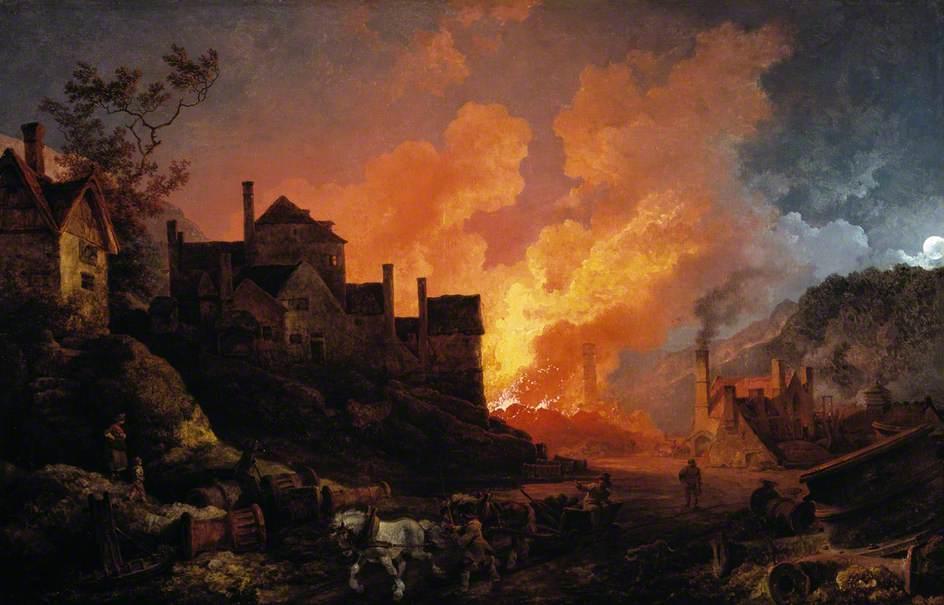

Rapid advances in manufacturing technology beginning at the end of the eighteenth century soon changed society forever. The changes began with the textile industry: in 1784, the British inventor Edmund Cartwright invented the power loom, a device that could spin thread into cloth forty times faster than manual weaving. Ten years later, American inventor Eli Whitney patented the cotton gin, a device that allowed the seeds to be removed from cotton fifty times faster than a worker could do it by hand. Clothing could now be manufactured on a mass scale much more easily than a tailor could make it by hand.
Other advances soon followed. Improvements to blast furnaces made the production of iron more efficient, and steam engines replaced the much less efficient watermills and windmills. Before long, every industry had been revolutionized by changes in technology. By the middle of the nineteenth century, the whole economy of Britain, and increasingly the rest of Europe, shifted from an agrarian economy focused on farming and handicraft to an industrial economy focused on factory and machine manufacturing.
Farmers and craftsmen soon found themselves out of work, displaced by this new technology. Many of them had to move into the cities and get jobs at factories where conditions were terrible. People everywhere were frightened and appalled at the metamorphosis of once idyllic landscapes into industrial steelworks billowing black smoke. For both economics and aesthetics, the industrial revolution was a watershed moment.
Should advances in technology that disrupt the livelihood of people in traditional industries be curtailed in some way?